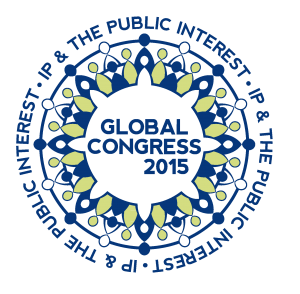This post is part of SpicyIP’s coverage of the Fourth Global Congress on Intellectual Property and the Public Interest.
 The second session of Day 1 featured some extremely fascinating insights from across the developing world, adding fresh glosses to familiar themes in some cases, as well as radical new ideas from the bottom up in others.
The second session of Day 1 featured some extremely fascinating insights from across the developing world, adding fresh glosses to familiar themes in some cases, as well as radical new ideas from the bottom up in others.
First up was Prof. Anil Gupta, co-ordinator of the path-breaking Honey Bee Network, which aims to connect small innovators (who seem to be all-pervasive in developing countries) with each other as well as the wider world, helping them secure IP protection for their inventions. Prof. Gupta started off with an almost Gandhian mission statement, noting that his organisation sought to articulate IP rights in a manner that does not inflict harm upon anyone. Emphasizing just how counter-intuitive his organisation’s credo was, he noted the fact that entire disciplines of human endeavour such as ethnobotany had once rested on the unattributed “borrowing” of indigenous people’s knowledge.
He pointed out that some innovations had the potential to spawn hundreds of derivative inventions, and the equitable sharing of the benefits arising out of these technological advances could result in the formation of a “technology commons”. In closing, he argued that developed countries have an obligation to ensure the transfer of technology, through systems such as global patent pools, for instance.
Prof. Gupta was followed by our own Prof. Basheer, whose presentation seemed to be, in a sense, a gigantic exercise in patent-product linkage. Prof. Basheer argued that if the patent system was a drug, it would never gain regulatory approval since it was bound to fail on the count of safety (economists admit that most scenarios are better served by non-IP innovation incentives) and on the count of therapeutic efficacy (IP has a placebo effect, at best, attracting investment from companies simply because of a signalling effect, through which they perceive stronger IP regimes as being safer venues for investment). Further, he argued, this IP ‘drug’ had pernicious side effects to the public interest, such as trolls, blocking patents, and high prices. However, he noted that the establishment of IP-based incentives was a path-dependent process, quoting Fritz Machlup to conclude that the existing patent system must not be abolished. Given the constraints that international instruments such as TRIPS place on public choice, he argued that IP could move from a regime of exclusivity to one of equity. He noted that the trend was for legislators to make laws specifying exclusivity, and for courts to read these laws in a manner that returned equitable results. He wondered what the future should hold for us, recommending a middle path of sorts, in the form of a “compensatory commons”, in which exclusivity would be replaced by a “take and pay” regime.
Allan Rocha De Souza then brought us up to speed with the developments in Brazil, providing a unique perspective of the interaction between civil society and legal change. He noted that the last few years had seen a significant thrust against activism, with a gradual takeover of policymaking by large corporations and their proxies. He did, however, note that the ratification of the Marrakesh Treaty and other recent developments signalled a change in fortunes, but suggested a paradox in that they had occurred precisely because civil society had “laid low” over the last year or so.
Shiba Phurailatpam then narrated his experience on the ground with the A2M movement noting that there existed a grave necessity for the latest and most effective medication to be delivered at the lowest possible price. He echoed the sentiment of previous speakers when he emphasized that this area of the IP debate was the most non-negotiable, since A2M issues were literally questions of life and death.
Jayashree Watal gave us a peek into the negotiations that preceded the TRIPS Agreement, arguing that developing countries fully understood what they were getting into when they signed up for it. She further argued that there were five principal reasons for developing countries accepting TRIPS standards: it contained enough flexibilities for poorer countries to play around with; the alternative was a slew of bilateral negotiations between obviously unequal parties, leading to FTAs that enshrined much higher standards of IP protection; there was a coalition within the North itself to incorporate some flexibilities into the TRIPS; and the predominant economic rationale of the time, based on the Washington Consensus, of which strong IP protection was a logical extension. She further emphasised that the IP-Trade link isn’t always a bad thing. Illustratively, she pointed the audience to cases such as US-Gambling, in which smaller countries such as Antigua and Barbuda could take on larger countries such as the US with the threat of cross-retaliation. Finally, she asserted that developing countries had now learnt to play the trade game to their own advantage, negating much of the pernicious impact the IP-Trade link poses to public interest activists.
Rounding off the session was Shishir Jha’s presentation, in which he highlighted the problems surrounding the academic publication ecosystem, and Renata Avila’s novel solution to the problem of IP-globalisation, in which she argued that smaller countries such as Guatemala would benefit from the use of strategic litigation at the constitutional level to assert the public interest in IP.
Watch this space for more updates on the GCIP!